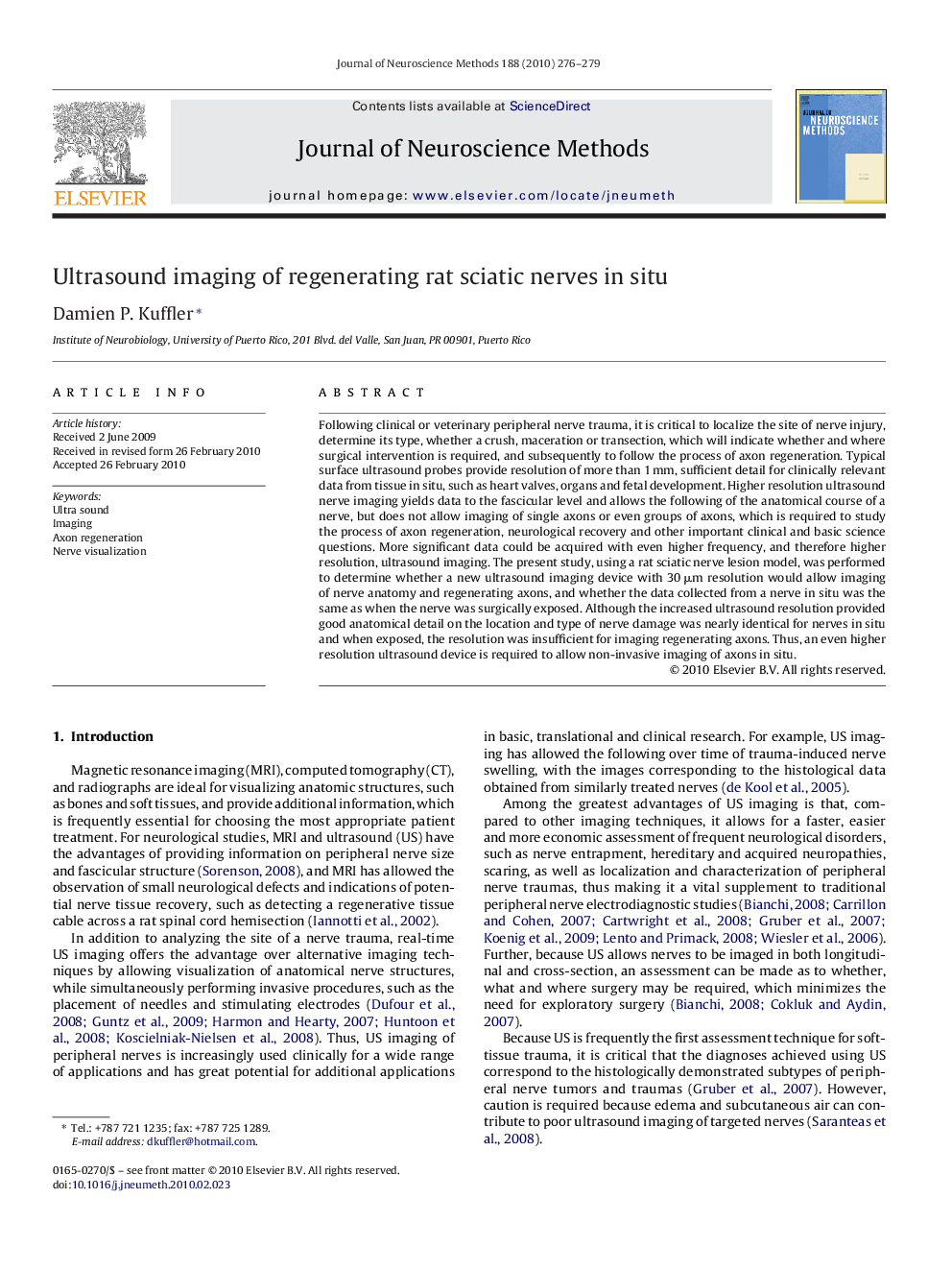| Article ID | Journal | Published Year | Pages | File Type |
|---|---|---|---|---|
| 4335722 | Journal of Neuroscience Methods | 2010 | 4 Pages |
Abstract
Following clinical or veterinary peripheral nerve trauma, it is critical to localize the site of nerve injury, determine its type, whether a crush, maceration or transection, which will indicate whether and where surgical intervention is required, and subsequently to follow the process of axon regeneration. Typical surface ultrasound probes provide resolution of more than 1 mm, sufficient detail for clinically relevant data from tissue in situ, such as heart valves, organs and fetal development. Higher resolution ultrasound nerve imaging yields data to the fascicular level and allows the following of the anatomical course of a nerve, but does not allow imaging of single axons or even groups of axons, which is required to study the process of axon regeneration, neurological recovery and other important clinical and basic science questions. More significant data could be acquired with even higher frequency, and therefore higher resolution, ultrasound imaging. The present study, using a rat sciatic nerve lesion model, was performed to determine whether a new ultrasound imaging device with 30 μm resolution would allow imaging of nerve anatomy and regenerating axons, and whether the data collected from a nerve in situ was the same as when the nerve was surgically exposed. Although the increased ultrasound resolution provided good anatomical detail on the location and type of nerve damage was nearly identical for nerves in situ and when exposed, the resolution was insufficient for imaging regenerating axons. Thus, an even higher resolution ultrasound device is required to allow non-invasive imaging of axons in situ.
Keywords
Related Topics
Life Sciences
Neuroscience
Neuroscience (General)
Authors
Damien P. Kuffler,
